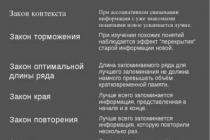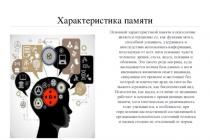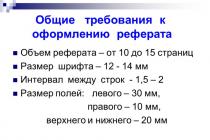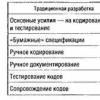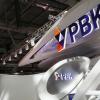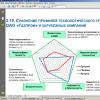Oil production is often talked about as if it's something bad. Like, stuck a pipe into the ground - and collect rent. This was not true even in the time of the Nobel brothers, but now it has nothing to do with reality. Contemporary oil deposit no less technologically advanced than a nuclear reactor, and modern oil workers are not grubby guys in helmets that look so good in the pictures, but experts in the field computer technology. An example of this approach is the "Intellectual field" project of PJSC "LUKOIL".
The deposit is found, equipped, exploited. Some wells are drilled, others fail. Ground infrastructure is being built and modernized. Finally, the field is depleted, it is decommissioned and converted, for example, into an underground gas storage. And throughout the entire life cycle, it is accompanied by a "digital twin" - an integrated mathematical model of the entire production chain, built into the company's business processes and its IT architecture. Many factors, from reservoir pressure to market conditions, are analyzed, brought together and form the basis on which geologists and technologists make operational decisions and build development plans.
Everything needs a system
This is how LUKOIL's "Intellectual Field" project functions ideally. Alas, our world is not perfect. There are examples when a "double" is created for a field where there is nothing but an exploration well and several dozen sensors, but they are not numerous. Basically, integrated models are now being built for already operating fields, including those whose operation life is calculated in decades. To date, more than 20 models are already in operation, and by 2025, integrated models will be built for all the company's priority fields.
"Intellectual field" in the company is defined as a set of organizational, technological and information solutions that allow efficient management of fields. In the center is an integrated model that takes into account more than 40 parameters of the production chain "from reservoir to consumer". The "heart" of the model is information about the operation of the reservoir, wells and equipment, as well as software for integrated simulation. It is based on physical and mathematical algorithms that allow you to combine data from production and accounting systems with integrated and hydrodynamic modeling systems - to conduct a detailed analysis of production scenarios, compare them with each other and choose the most optimal one from a variety of options.
The system allows for regular recalculation of production indicators for subsequent optimization of technological parameters in case they deviate from the optimal ones. “The field lives, its parameters change. We learn to predict, take into account these changes and plan in advance compensation measures where necessary and possible,” says Azat, Head of the Oil and Gas Production Department of PJSC LUKOIL, Head of the Intelligent Field project Azat Khabibullin.
A few years ago, different services - economic, technological, geological and others - worked autonomously, each in its own direction, Vadim Voevodkin, general director of LUKOIL-Engineering LLC, told Nauka. His subdivision is engaged in the creation (and subsequently updating) of integrated models of deposits. Simulation systems were also used, both at the pre-operational stage and throughout the entire life cycle of the field. But these technologies were expensive and were applied locally: some one problem was taken, which was modeled in a special software complex and proposed a solution, often without taking into account the impact on related objects. For example, an increase in well flow rate as a result of hydraulic fracturing was calculated, but a decrease in production in neighboring wells with a possible output of pumping equipment to non-optimal operating modes is no longer.
Today there is an opportunity to move to an integrated approach to process management. To do this, the company's oil and gas production divisions are creating integrated operations centers (CIOs), into which all information about technological processes at the field flows. This information is analyzed, in particular, compared with the indicators that are calculated on the model for a stable system. The discrepancy between the real and calculated parameters is the reason for the multidisciplinary team of specialists working in the CIO to pay attention to possible problems.
“It used to be like: an operator comes, sees that the well has stopped — and he has dozens of other wells that he must bypass — and he came and transmitted information about the incident already at the end of the working day,” says Vadim Voevodkin. In fact, troubleshooting started with a delay of a day, or even more. Today, deposits are equipped with measurement and data transmission tools to see information online. Today, the effect of increasing the speed of decision-making and the quality of decisions in fields equipped with integrated models is already visible.
In addition, there is an increase in standards industrial safety. Introduction of integrated modeling, improvement of monitoring systems technological processes made it possible to adjust the systems for the optimal mode of operation. As a result, not a single serious incident has been recorded at the facilities equipped with intelligent systems for the entire period of their operation (since 2015).
The use of digital technologies in fields at the later stages of development is intended, among other things, to extend their productive period. "The shift of the main Russian production to the region of Eastern Siberia and the Arctic zone will not be able to fully compensate for the natural decline in production at depleted fields Western Siberia and the Volga-Ural region," the International Energy Agency's report last year stated. "Intellectual field is a very powerful tool for maintaining economically justified production in old fields," Azat Khabibullin retorts.
From Iraq to Siberia
The history of the project began in 2011, when the concept of arrangement and development of the West Qurna-2 field in Iraq was built. The desire to make the field as digital as possible was dictated by several considerations. The first is cost reduction and profit maximization. The second is to reduce risks for personnel. Iraq remained Iraq, even a few years before the start of work at LUKOIL, all questions about Kurna were categorically answered that until the shooting stopped, the company would not even come close to Iraqi oil. After the cessation of hostilities, the danger decreased, but did not disappear.
Around the same time, the concept of integrated operations was created for one of the largest assets of LUKOIL - the South Yagun field in Western Siberia, the development of which began back in 1982. Based on the results of these projects and the experience gained in creating models in Kazakhstan and Uzbekistan, it was decided to scale these developments to other assets. In 2014, the "Intellectual field" took shape as a project at the company level, and work began on the design and creation of integrated operations centers, and in 2016, the first such center in the Russian Federation was launched at OOO LUKOIL-Perm.
“If earlier digital technologies had a limited distribution, now it is clear that on the threshold of their mass application, we simply have to be at the forefront in order to remain an effective high-tech company,” says Azat Khabibullin. First of all, we are talking about the means of collecting, transmitting and storing information and modeling.
However, it is impossible to single out any one technology and say that it is to it that we owe the appearance of the "Intellectual Field", Vadim Voevodkin argues. Only the complex application of all technical innovations makes it possible, firstly, to place sensors on wells and infrastructure facilities. Secondly, promptly transmit this information. And, thirdly, to analyze this information in the CIO just as quickly and use it when making decisions.
The company likes to mention the Pareto rule - 20% of investments give 80% of the profit
digital people
It was the problem of information quality that the specialists of LUKOIL-Engineering had to face when developing integrated models. So, the adaptation of one of the models to reality took several months! “Until recently, various information — about wells, workovers, pressures, and so on — was in different storages, in different software products,” says Vadim Voevodkin. agreed."
The quality of data obtained 40-50 years ago also needs to be assessed. To avoid these problems in the future, LUKOIL-Engineering launched projects of a single information space and a single data bank, where all information from the fields will be collected.
Another way to improve data quality is to reduce the influence of the human factor. Until now, part of the information is entered into databases manually or transferred on flash drives. Workflow automation is an essential part of the Smart Field project. "Introducing new technologies, we are moving towards making the work of people more productive. We are freeing our specialists from routine operations. At the same time, the use of modern tools places higher demands on the qualifications of engineers, and a training program is being implemented in the company to form the necessary competencies workers," says Azat Khabibullin.
An unexpected problem that the developers of the Intellectual Field systems had to face was the inertia of thinking. "The oil industry has been developing for decades, and taking into account the vast experience that people have accumulated, the stereotypes are also huge," says Vadim Voevodkin. The best way overcoming them is to train new specialists. This is given to the company great attention. Five departments in specialized universities - two in Moscow and one each in Perm, Tyumen and Volgograd - produce "digital staff", specialists with the skills to use digital technologies. Most of the graduates come to work at LUKOIL straight from their student days.
Pareto rule
The creation of a full-fledged "digital twin" of the field is a matter of the future, although, apparently, not far off. Bye we are talking on the development of mathematical computational models production processes. “Now we are building five such models, and one of them, the Yuzhno-Yagunskoye field model with a well stock of 1,500 wells, will become the largest in Russia. This is a huge asset for modeling and a serious challenge for us,” says Azat Khabibullin. "Even purely technically, it is already a difficult task to ensure the flow of high-quality data, operability and speed on such an array. We use both software products foreign companies, and Russian software. This allows you to protect yourself from all sorts of political factors," the company explains. In addition, Russian software is not inferior to the best world models. This, for example, the T-Navigator hydrodynamic simulator from the Skolkovo resident RFD company, the OIS information system developed by GIS- automated control system, the "Engineering Simulator" project of the Perm Research and Development Institute, and a number of others. automated system management of integrated models, developed jointly with ITPS and received the award of the best IT projects for the oil and gas industry in the Digital Field nomination in September 2018.
As for the element base, almost all of it is produced international companies. However Russian enterprises have already mastered the production of sensors, communication and information transmission systems.
Of course, LUKOIL is far from thinking of equipping all its fields with intelligent systems. "We can hang wells huge amount sensors. But will it increase the value of the company?" - the project manager asks a rhetorical question. Therefore, first of all, attention is paid to assets that bring maximum value, located on the sea shelf or in harsh climatic and socio-political conditions. The company likes to mention the Pareto rule - 20% of investment gives 80% of the return.The current plans - to increase the number of active integrated models to 124 - mean that they will cover approximately 20% of all available fields.In terms of reserves, this is already half, and in terms of production - 80%.
However, this is for now. Previously, simulation technologies were prohibitively expensive, only the space industry could afford them, where money is not accepted. Then they came to offshore oil production, where the cost of error is extremely high (remember, for example, the explosion of the BP Deepwater Horizon platform in the Gulf of Mexico). Now it has become justified to use them on large deposits. What tomorrow? “Intellectual Field is not some finished solution, it is a constantly evolving organism,” says Vadim Voevodkin. As the systems are ready, neural networks, principles of machine learning, and artificial intelligence will be used.
If earlier digital technologies had a limited distribution, now it is clear that on the threshold of their mass application, we simply have to be at the forefront.
Dmitry Pavlovich
The technological strategy of the exploration and production unit adopted by Gazprom Neft unites all projects aimed at improving the efficiency of the production process, developing new reserves, and infrastructural solutions. As part of the technical strategy, progressive IT solutions are being introduced in the company. But, as practice shows, it is not enough just to acquire an innovative solution or even develop it within the company - it is also important to correctly implement it and track its further use. The Digital Field program is aimed at the implementation of relevant measures.
Digital field
The Digital Field program combines theoretical and practical approaches to increase the efficiency of Gazprom Neft's production assets. The program is based on the automation of technological processes through the introduction of advanced IT solutions, as well as the reorganization of related business processes. In addition, a characteristic feature of the program is the introduction continuous process improvements with the help of the best world practices. This approach allows you to constantly find weaknesses in any process and optimize the applied IT solutions in accordance with changing external conditions.
The pilot implementation of the Digital Field program at the assets of Gazprom Neft began in 2014, and the assets of Gazpromneft-Khantos were chosen as the launch pad for the project. In 2016, three more Gazprom Neft enterprises completed the first stage of the Digital Field, aimed at identifying a list of potential improvements and the accompanying economic effect.
No templates
The main feature of the Digital Field program is the implementation of IT solutions simultaneously with a detailed study and subsequent improvement of the business processes to be digitized. Otherwise, what kind of efficiency can we talk about when there is an excellent working tool, but there is no understanding of where and how to use it? To do this, the program uses LEAN 6 SIGMA tools: to correctly identify problems in processes and their true causes, to identify areas for optimization and to develop an implementation plan.
In addition, Digital Field has a tool that allows you to make improvements permanent - you can’t just optimize and leave. Through the use of continuous improvement cycles (Deming cycles), the process of improving the performance of an asset is automated: processes are optimized, successful results are recorded, taken as a basis, and a new improvement cycle begins. Thus, it is possible not to stop there and continue to improve the asset.
And, finally, and most importantly, the Digital Field program is aimed at meeting the specific needs of assets. There is no single template based on which improvements are implemented. Each mining enterprise has its own priorities and specifics, which are taken into account at the start of the program - this is the most important step that lays the foundation for future implementation.
Vadim Yakovlev, First Deputy CEO Gazprom Neft:
Gazprom Neft is consistently moving towards achieving strategic goal— production of 100 million tons per year. It is equally important for us to become a leader in efficiency. This task is especially relevant in a difficult external environment. "Digital Field" is a project that reflects our focus on continuous improvement of operating and organizational effectiveness. The goal of the project is to ruthlessly get rid of all types of losses, to make the work of literally every employee as meaningful and productive as possible. This should become the basis of our production philosophy, part of our culture.
The implementation of the Digital Field is carried out by a separate team of specialists with program management competencies, bringing together experts both from the corporate center and in the field. At the beginning of this year, a number of Gazprom Neft production enterprises launched the first stage of the Digital Field — Determining the Organizational and Technological Potential of an Asset.
Determining the technological potential consists of several steps based on the techniques of "Lean Manufacturing". The work begins with identifying business processes where an asset could potentially take a leap forward. They are different for each field, so this is the most important step in determining the direction in which to move forward. The selected processes are taken as the basis for further analysis, disassembly and identification of areas for improvement. As a result, the asset receives a list of areas for further improvement and the reasons that currently prevent effective work. This list is backed up by concrete calculations of the money a company can save by improving its processes.
Six Sigma
(English) six sigma) is a production management concept developed by Motorola Corporation in 1986. The essence of the concept boils down to the need to improve the quality of each of the processes, to minimize defects and statistical deviations in operating activities. The concept uses quality management methods, including statistical methods, requires the use of measurable goals and results, and also involves the creation of special working groups in the enterprise that carry out projects to eliminate problems and improve processes.
Lean
(from the English lean production, lean manufacturing - "slender production") - the concept of managing a manufacturing enterprise, based on the constant desire to eliminate all types of losses. Lean involves the involvement of each employee in the process of optimizing the business and the maximum focus on the consumer. It arose as an interpretation of the ideas of the Toyota production system by American researchers of its phenomenon.
Deming cycles
(William Deming - American scientist, statistician and management consultant) - a cyclically repeated decision-making process used in quality management. It includes several stages - planning, action, verification and adjustment.
“The definition phase itself was a very interesting experience for us. We have identified the potential that we have to work on. We saw our processes from a different angle, gained experience in interaction between teams. People have acquired important competencies in diagnosing problems and assessing risks,” Valery Chikin, General Director of Gazpromneft-Muravlenko, assessed the work at the asset.
Digital Field Approach (click to enlarge image)
Key Processes
With regard to specific results, they all corresponded to the characteristics of each asset. Thus, the mining enterprises in Noyabrsk and Muravlenko are the oldest in the company. They account for a significant share of the total production volume, and therefore, the increase in efficiency here is primarily aimed at processes directly related to production: maintaining reservoir pressure, lifting liquid in the well, managing capital construction of wells. The total improvement potential for these three processes alone for the two enterprises could amount to more than 1.5 billion rubles. Noyabrsk and Muravlenko have successfully synchronized on the issue of process selection: as a result, the companies will improve the fluid lifting process jointly, specialists from Gazpromneft-Noyabrskneftegaz will maintain reservoir pressure, and Gazpromneft-Muravlenko will deal with capital construction. Then the assets will exchange experience, which will significantly increase the effectiveness of the implementation of improvements. “We have identified many factors that affect the rate of development of the enterprise,” says Pavel Kryukov, Director General of Gazpromneft-Noyabrskneftegaz. “With the help of the tools proposed by the team, we were able to understand what their causes are. And, most importantly, to find the best way to solve problems by working together with assets facing similar difficulties.”
The problems identified in Gazpromneft-Yamal, which is developing the Novoportovskoye field, are primarily due to the location of this field - it is located beyond the Arctic Circle, far from the transport pipeline infrastructure.
After the commissioning of the Arctic Gates of the Arctic loading terminal in May this year and the possibility of full-scale shipment of oil from the New Port via the Northern Sea Route, the field began to operate at full capacity. At the same time, the complex logistics of both the shipment of oil and the delivery of personnel and various cargoes to this remote asset of the company remains key process requiring constant improvement.
A pilot IT solution as part of the first stage of implementation of the Digital Field was developed to simulate the schedule for offloading oil by sea tankers. This, at first glance, trivial for the average seaport the task becomes much more complicated when oil is shipped in the Ob Bay of the Kara Sea. The main external factors affecting the implementation of the shipment plan here are constantly changing weather conditions that prevent the tanker from starting to load, and difficult ice conditions(the thickness of the ice reaches 2.5 meters).

A feature of the Novoportovskoye field is a complex logistics scheme for oil shipment
Usually the shipment schedule is built manually by a specialist, it takes several days. The created pilot program takes several minutes to build a graph. At the same time, testing of the program showed that when using it, the risk of errors in calculations is eliminated, and the efficiency of shipments is higher. In particular, according to preliminary estimates, the average time of a mooring operation for loading a tanker can be reduced by 1 hour, so that the company will be able to load one additional tanker per year. Estimated implementation of the program will allow the company to save about 665 million rubles. On this stage specialists are working on the issue of further automation of the end-to-end process of transporting oil from the well to the consumer.
“The identified potential improvements in the logistics processes for the development of the Novoportovskoye field have shown the need to introduce a special class of decision support systems - real-time control systems,” said Alexei Ovechkin, General Director of Gazpromneft-Yamal. - Unlike the classical system, where there is an action plan and its execution, real-time control is the processing of all events at the moment they occur. Thus, there is no discrepancy between the plan and reality, when during the execution events occur that are not taken into account in the plan and affect the result.
The implementation of the Tsifrovoe field is also ongoing at Gazpromneft-Khantos, which at one time became the starting point for launching the program. It was here that its concept was worked out and approaches were developed that are now used on other assets. The pilot project here was the automation of the processes accompanying well workover, as a result, at the beginning of 2016 alone, the savings due to the reduction of well downtime amounted to 73 million rubles. Having successfully completed the pilot, the asset continues to operate as part of the Digital Field. Now the program is being synchronized with the LINE project (optimization of business processes using LEAN tools) in the field of planning organizational changes.
“Digital field” for us has never been just an IT project for automation,” the head of department summed up the results of work on the company’s assets information technologies, Automation and Telecommunications of the Exploration and Production Block of Gazprom Neft Maxim Shadura. — In the company, we have come a long and difficult way to achieve a common understanding of the program in terms of business process reengineering and the importance of organizational components in it. Only after the completion of the pilot at Gazpromneft-Khantos did we develop a full-fledged integrated methodology. We have made a big step in the analysis and structuring of processes, but we still have a step ahead in their improvement and implementation with built-in continuous improvement approaches.”
Konstantin Kravchenko, Head of Information Technology, Automation and Telecommunications Department, Gazprom Neft:
The Digital Field is an integral part of Gazprom Neft's ITAT strategy for digital business transformation. This is a new direction both for us and for the entire oil industry, both in terms of the scale and characteristics of the tasks being solved, and in terms of approaches to solving them. Of course, such projects help us identify growth points and take a fresh look at the role of IT in the development of our company, as well as find ways for closer interaction between IT and business. I want to emphasize that the Digital Field program is aimed at achieving practical results, and the experience gained during its implementation will be useful for other areas of the company's activities.”
The results of the implementation of the first stage of the implementation of the Digital Field program have shown that some of the solutions can already be replicated to other assets. The next step will be the formation of continuous improvement cycles, the selection of IT and organizational solutions and the formation of a project portfolio that will include all decisions in key areas of improvement on assets.
Text: Andrey Borzov
Photo: Maxim Avdeev, Alexander Taran, Sergey Grachev
Infographic: Daria Gashek
Having started projects in the field of "digital field" back in 2015, the Kazakh Dreamline Company turned out to be one of the most prepared in the country to participate in the "Digital Kazakhstan" program, adopted at the government level in December 2017. In an interview with Standard Editor-in-Chief Leonid Konik, he spoke about the details and first results of the implementation of the Digital Field project. Executive Director Business Development LLP "Dreamline Company" Razak Karsakbaev.
In 2015, your company received an order for the development and implementation of the Digital Field system at EmbaMunayGas JSC - 100% subsidiary of Exploration Production KazMunayGas JSC, owned by the Kazakh state company KazMunayGas. How and why " EmbaMunayGas decided on this project?
In 2015, the term "digital field" began to come into use. And the management of "EmbaMunayGas" decided in practice to understand what it is. We worked with them and proposed a concept: in our understanding, "digital field" meant the management of digital flows. For the pilot project, the company chose a small Uaz field in the Atyrau region - 32 wells. The customer himself equipped them with various control systems: Danfos frequency drives with intelligent control stations based on SALT software were installed at each well, telemetry and various sensors were deployed, all tanks were equipped with level gauges. Thus, a powerful digital stream was formed, to which we got access for experiments.
We have assembled a working prototype of the "digital field". We studied technology and production, and our main idea was to properly manage and work with the flow of digital data. For example, the customer had a problem - a large discrepancy between the measurements at the wells and what was actually collected in the reservoir. Thanks to digital technologies, we were able to understand where the losses occurred and how this difference can be influenced using production optimization technologies.
- What data was collected during this work?
All parameters that affect production. From intelligent stations, information was collected on filling the pump, on the time of shutdown / start-up of wells, diagnostics of the state of underground equipment was collected. These indicators were compared with data from metering units, which check the well flow rate with a certain frequency. Thus, the daily measured production at the wells was deduced. The pumped liquid (multi-phase mixture) is driven through furnaces and separators, resulting in the separation of water and gas. The customer equipped all sections of preliminary oil treatment with telemetry systems and measuring equipment. This gave us the opportunity to more accurately determine reservoir production. It can be said that the task of reducing discrepancies between measured and reservoir production was solved through the creation of additional digital streams and "tuning" of the oil balance calculation algorithm.
During the project, another task was also solved: 32 wells require regular maintenance, with the departure of repair teams with special equipment. All this special equipment is equipped with GPS-monitoring systems and telemetry of tripping operations of the Petroline company. The electronic tracks of these machines are also processed and compared - for example, with the established technological parameters (time for repairs, downtime, and so on). Trip charts determine time delays associated with unproductive downtime. We also process this data and determine where the weak points are.
The third parameter, which turned out to be interesting for the customer, is related to the specifics of the deposits. They require regular bypassing by operators, and many faults can only be detected visually or audibly. We equipped the operators with conventional smartphones, recorded their routes and compared the movement patterns with what is required by the technical regulations. This had an effect: the customer began to learn about malfunctions earlier and react - thus, the main indicators in technological discipline improved.
- What is the amount of data processed by Dreamline Company in the course of this work?
From the ground infrastructure, we collected about 600 tags at once. The second stream of information - data on the operation of pumps from 32 stations. There was also a third stream - indicators of dynamographs: they were installed for experimental purposes in eight wells with pumping units to diagnose violations in the operation of underground equipment. In addition, we processed GPS signals, and not only from automotive equipment, which was not so much, but also from devices that were equipped with employees of all 40 teams working in the fields.
In the course of the project, it turned out that the management of EmbaMunayGas is also interested in the information that is recorded in the accounting systems, and they use SAP and the geological and field database. Therefore, we organized the flow of information from these systems as well.
Our company has been operating the Digital Field system since February 2016. Since then, we have supplemented it with elements of analysis and forecasting. In particular, they created a simple model that determines how external factors affect the fall in oil prices and the dollar exchange rate, and how all this can affect the provision of the oil field, subject to a given production volume.
At the same time, we conducted a project related to logistics: we built a material order planning chain, taking into account current stock balances in warehouses and checked against what was recorded in the SAP system. Improved planning has led to a significant reduction in the volume of non-liquid assets over the past two years. And now we are solving the problem of the turnover of these materials: we take one or two indicators and try to figure out what factors affect them.
- You said that all sensors have already been installed at the customer's. Where does their information go?
The sensors operate on the basis of wireless technologies, and the data from them is relayed to the customer's central office, where the Control and Information Center (CIC) is deployed: everything is displayed on large screens and analyzed there. As a result of the implementation of the first stage of the project, the management of EmbaMunayGas decided to strengthen the CIC of the analytical group, and we got four more fields to work. And in 2019, four more sites are planned to be added. Our project, without exaggeration, gave impetus to the digitalization of deposits in Kazakhstan, became a template and was accepted for replication. As far as I know, in the next three years the implemented approach is planned to be applied in all subsidiaries of KazMunayGas.
Will success in implementation this project Dreamline Company to start cooperation with other companies of the KazMunayGas group?
Yes. We have already begun work in two more subsidiaries of KazMunaiGas - JSC MangistauMunaiGas (JV with the Chinese oil corporation CNPC) and JV KazgerMunai LLP. Taking into account the fact that Dreamline Company has become a member of the Digital Kazakhstan program, we have a chance to participate in the implementation of the "digital field" and in other "daughters" of NC "KazMunayGas".
In addition, we received support in the form of ideas for the development of the Digital Field system from managers of oil companies: for example, specialists from MangistauMunayGas Serik Dosaev and Yerbol Mukashev suggested the idea of factor analysis to us. And OzenMunayGas employees Gabit Abenov, Ermek Karamurzaev and Agzam Khudaibergenov explained the algorithm for calculating direct and indirect oil losses.
I would like to separately note the initiative group at EmbaMunayGas JSC (Baurzhan Balzhanov, Abat Kutzhanov, Kairat Kozov, Bolat Nsanbaev, Alikhan Baidusenov), which provides us with expert and methodological assistance in promoting the ideas of the "digital field".
It can be said that the project at the Uaz field made it possible to bring together initiative experts in the oil industry of Kazakhstan into one team.
The government of the republic approved the state program "Digital Kazakhstan" on December 17, 2017, and a large part of it is dedicated to the oil and gas industry. What does participation in this program look like for Dreamline Company?
We hope to take an active part in the state program "Digital Kazakhstan". The results obtained at the Uaz field convince us of the correctness of the strategy chosen by our company.
Current trends are the Internet of Things and data collection, allowing not only remote monitoring, but also predictive management. Are you already doing something similar?
Yes, we are moving towards this. We have already implemented forecasting elements in the first version of the solution. We predicted how much oil would be produced by the end of the day, and also showed which wells would need to be stopped if the oil price fell below a certain level, and what would be the loss in total production because of this. In addition, having statistics on well measurements, we calculate what technical regime each well should have for the next reporting period, and the customer uses this data for planning.
Another element that we have implemented is the methodology for calculating input production. The fields are flooded, there is less oil in them, and one can roughly calculate the probability of a drop in production. All activities to maintain the production plan can be converted into money and their effectiveness can be assessed. Such calculations are possible thanks to big data mechanisms. And now we can accurately show the return on geological and technical measures and the profitability of each well.
- What big data tools do you use?
We tried to use the structure that the customer had. As I have already mentioned, EmbaMunayGas has a SAP solution as its accounting system, which has effective tools for storing and analyzing information. To this we have added forecasting tools on the QlikView BI platform. Plus, our programmers had experience in the Python language – we made visualization of algorithms, calculations of input production, technical modes and other processes. And the customer received processed data, analytics and forecasts in the form of widgets and dashboards.
- Are there any estimates of the economic effect of Dreamline Company's work in EmbaMunayGas JSC?
It turned out to be difficult to prove the effectiveness, because work is constantly being carried out at the field: new wells are being drilled, old ones are being brought out, various technical measures are being implemented to increase the intensity of production. According to the customer's production workers and economists, our project increased production by 1.6-1.7%. In my opinion, this is a greatly underestimated figure, but we did not argue.
The second indicator, calculated by economists, is the decrease in the number of approaches of repair teams to wells. Energy consumption savings of 30‑35 % were also achieved. In percentage terms, the savings are good, but we have cheap electricity in the republic, that is, in terms of money, this is not much.
Summarizing, I will say that even according to the low estimates that we were given, it turned out that the payback of the project is 2.5-3 years. For Dreamline Company, this is the main thing: we have shown the effectiveness of services, and a whole market is opening up for us.
- Does Dreamline Company see opportunities to work outside of Kazakhstan?
On April 18, 2018, I spoke at the St. Petersburg Digital Forum precisely to convey this idea. Yes, we are trying. In Kazakhstan, our initiative was positively received, and Dreamline Company received a state grant in the amount of $100,000. The Kazakh Research Institute "Artificial Intelligence" offered us to join forces to fight for a European grant, which will be drawn in September. We are also negotiating with investment funds to raise financing for further development product as a complete technical solution, ready for replication, including in foreign markets.
The Dreamline Company product was originally designed for use in onshore fields where production is declining, and this is where we see the point of effort.
How did the company come up with this idea?
I myself worked in the oil industry, was the IT Managing Director at Exploration Production KazMunayGas. My colleagues and I nurtured this idea while still inside the company. In any case, we ourselves budgeted and implemented digital information sources. Then the idea arose to try yourself on open market and create a complete solution, and since 2014 we have been doing this. The backbone of the Dreamline Company - are the people who worked with me in 2012-2013 to solve these problems.
- Do you have a large team?
Dreamline Company employs about 30 people. We have two areas: automated process control systems and ERP systems. Now we are recruiting people who have expertise no longer in IT, but in oil. Experts in mechanics, drilling, finance came to us. We will "pump up" the prototype of the system we have created with the intelligence of experts in these highly specialized areas. Perhaps, in the perspective of three to five years, we will reach the creation of a system with artificial intelligence.
Array ( => [~TAGS] => => Array ( => 15329 => 08/21/2018 13:28:09 => iblock => 466 => 700 => 100235 => image/jpeg => iblock/da5 = >.jpg => EA_ris_275408_275408_l_srgb_s_gl.jpg => => => [~src] => => /upload/iblock/da5/da5c4a4c485514c56be7bfdb4682b5f6.jpg => /upload/iblock/da5/da5c4a4c485514c56 be7bfdb4682b5f6.jpg => /upload/iblock /da5/da5c4a4c485514c56be7bfdb4682b5f6.jpg => Five versions of the digital field => Five versions of the digital field) [~PREVIEW_PICTURE] => 15329 => 36325 [~ID] => 36325 => Five versions of the digital field [~NAME] => Five versions digital deposit => 1 [~IBLOCK_ID] => 1 => [~IBLOCK_SECTION_ID] => =>
Versions of oil and gas companies
Dmitry Pilipenko,
[~DETAIL_TEXT] =>
Ideal asset control is when the fact of production and activities at the field is as close as possible to the plan, while the costs are close to minimal. Today, many oil and gas companies are only striving to achieve this balance and are looking at all ways to reduce costs while maintaining production levels. Simple and obvious ways for most deposits have already been exhausted.
One promising way to strike a balance is through the “digital field”, a technology-based approach to managing upstream assets in a broad sense.
Even this term has many versions. Shell has Smart Field, Chevron has i-Field, BP has Field of Future. Despite the discrepancies, a smart, intelligent or digital field is called assets that are equipped with a set of monitoring and remote control systems and software for a number of business processes.
Another common feature of digital fields is ultimate goals transition to it. Projects with different names and different tools are aimed at increasing production, minimizing costs and labor, and minimizing environmental impact.
According to research companies, the main effect of the transition to an intelligent field is an increase in oil and gas production, as well as a reduction in downtime and labor costs. One of the international consulting companies estimates the reduction in the cost of production at a smart field by 7-10% due to optimization of work and reduction of shortfalls.
According to Energysys, digital fields provide an optimal technological regime for oil production, which leads to a reduction in the cost of operating fields by an average of 20%.
This is how scientists and research companies describe the digital field.
Technology companies version
How does a smart field positively affect the performance of the oil and gas business? On the one hand, it implements modern approaches to management, including multidisciplinary teams and management by exception. The first principle allows you to unite all representatives of the company's key expertise into a single team. The second helps to reduce labor costs, solve problems more targeted, work with one specialist with a large number of wells. When managing by exceptions, the specialist concentrates only on those wells where there is a risk of deviations from the norm and problem situations. This became possible due to the fact that there were systems for monitoring the condition of wells in real time.
In addition, a smart field today allows you to collect the most complete "operational summary" for management. Modern leader, even sitting in his office with a tablet or computer, should be able to decompose to the lowest level data about everything that happens in the field. For example, the planned production figures at the field are 50 thousand tons per day, but in fact 49.5 thousand tons were received. Why? The manager should be able to “click” on this figure to open a detailed detail of the fact, find wells with unplanned shortfalls and find out the reasons: regime change, accident or something else. In order for such control to become possible, all key facilities in the field must be equipped with sensors, and data from them must be promptly transmitted to a single information system. Requires good communication channels as well as software products to support adoption management decisions. In other words, an end-to-end two-way communication of production with decision makers is necessary.
An example of a "summary" for a digital field manager
Many companies have their own vision of the technical implementation of an intelligent field. According to SAP experts, this is an expert-analytical system that promptly collects, analyzes information and makes recommendations for optimizing oil and gas production. A solution of this class cannot be imagined without the following set of functions:
· visualization of the current performance of the equipment (data of process control systems, etc.) for the facilities of the field;
· prompt access to regulatory and reference information on contractors and equipment;
· performing the function of an expert decision support system for geologists, developers, technologists and other technical specialists;
automated planning of all types of activities in production
· integrated modeling of the current state of the asset with the ability to quickly calculate the impact of operating activities on the production profile.
If tomorrow a technology or approach emerges to help petroleum engineers make a difference, optimize production, or make it safer, the list will grow.
Versions of oil and gas companies
The pioneers of digital fields in the 2000s were international oil and gas companies. Their digital mining experience spans 10-15 years.
In the Shell version of the digital field, production growth is ensured by the fact that the performance of reservoirs, wells, reservoirs, pipelines and other surface facilities is analyzed in real time based on the analysis of data from sensors of telemetry systems. The collected parameters are saved and processed. They are compared in real time with data from well models, pipelines, production and injection rates, and characteristics of land-based field facilities, which allows you to quickly form a comprehensive picture of what is happening in the field and identify deviations. This approach is also used at Shell's Russian fields.
Companies in Russia and the CIS started the transition to digital fields later, but are also seeing positive results.
In the late 2000s, SOCAR announced plans to move to integrated production planning. In the version of the Azerbaijani oil company, the smart field is implemented using a unified methodology and planning system, mobile devices for staff and a reporting system for managers.
On a daily basis, production masters form tasks for operators to bypass wells. The personnel bypasses the wells, fixing the parameters of their work using a mobile device, incl. fact in terms of production volume, technological modes of operation. The moment and conditions for shutting down the well are also noted on mobile devices. The parameters of the extracted oil are recorded at the workplace by laboratory assistants. This data is fed into the planning system in real time.
With this approach, company managers have access to operational reporting on the well stock and the main production KPIs. After the transition to integrated planning, the process of calculating the balance of oil and gas in SOCAR was reduced to two days.
In 2015, one of the major Russian oil and gas companies announced plans to switch to a smart field and a year later announced the results of pilot projects at several assets.
In the version of this company, a smart field is also a set of systems for monitoring and managing an asset, united by an integrated operations center. Here, data on production operations are centrally processed and analyzed in order to reduce losses and optimize the use of available resources.
According to the company's experts, at pilot fields, due to the use of the system, shortfalls were reduced by more than 7% as a result of combining activities, and a production plan, regimes and activities are formed 120 times faster. At the same time, 90 times less time is required to control the execution of the plan, 30 times less time - to analyze the operation of the well. All this means an increase in the efficiency of oil and gas production and more effective management company assets.
These and other versions of the digital field, its foreign and Russian implementations will be discussed at the III International Fuel and Energy Summit, which will be held on September 25-27 with the information support of Oil and Gas Vertical. We invite readers of the magazine to take part in it.
Dmitry Pilipenko,
Deputy General Director of SAP CIS
=> html [~DETAIL_TEXT_TYPE] => html => Ideal asset control is when the fact of production and activities at the field is as close as possible to the plan, while the costs are close to minimal. Today, many oil and gas companies are only striving to achieve this balance and are looking at all ways to reduce costs while maintaining production levels. Simple and obvious ways for most deposits have already been exhausted.[~PREVIEW_TEXT] => Ideal asset control is when the fact of production and activities at the field is as close as possible to the plan, while the costs are close to minimal. Today, many oil and gas companies are only striving to achieve this balance and are looking at all ways to reduce costs while maintaining production levels. Simple and obvious ways for most deposits have already been exhausted. => html [~PREVIEW_TEXT_TYPE] => html => [~DETAIL_PICTURE] => => 21.08.2018 13:28:09 [~TIMESTAMP_X] => 21.08.2018 13:28:09 => 21.08.2018 13:19 :52 [~ACTIVE_FROM] => 21.08.2018 13:19:52 => /news/ [~LIST_PAGE_URL] => /news/ => /news/pyat_versiy_tsifrovogo_mestorozhdeniya/ [~DETAIL_PAGE_URL] => /news/pyat_versiy_tsifrovogo_mestorozhdeniya/ => 36325 [~IBLOCK_ELEMENT_ID] => 36325 => Dmitry Pilipenko, SAP CIS [~PROPERTY_22] => Dmitry Pilipenko, SAP CIS => https://www.sap.com/cis/index.html [~PROPERTY_23] => https ://www.sap.com/cis/index.html => 0.0000 [~PROPERTY_54] => 0.0000 => 1.0000 [~PROPERTY_95] => 1.0000 => [~PROPERTY_148] => => / [~LANG_DIR] = > / => pyat_versiy_tsifrovogo_mestorozhdeniya [~CODE] => pyat_versiy_tsifrovogo_mestorozhdeniya => 36325 [~EXTERNAL_ID] => 36325 => news [~IBLOCK_TYPE_ID] => news => news [~IBLOCK_CODE] => news => furniture_news_s1 [~IBLOCK_EX TERNAL_ID]= > furniture_news_s1 => s1 [~LID] => s1 => => 13:19, 21 August 2018 => Array () => Array ( => => Array ( => 15329 => 21.08.2018 13:28: 09 => iblock => 466 => 700 => 100235 => image/jpeg => iblock/da5 =>.jpg => EA_ris_275408_275408_l_srgb_s_gl.jpg => => => [~src] => => /upload/iblock /da5/da5c4a4c485514c56be7bfdb4682b5f6.jpg => /upload/iblock/da5/da5c4a4c485514c56be7bfdb4682b5f6.jpg => /upload/iblock/da5/.jpg => Five versions of the digital field => Five versions of the digital field)) => Array ( => Array ( => 22 => 2018-03-10 19:22:21 => 1 => Author => Y => 500 => AUTHOR_NAME => => S => 1 => 30 => L => N = > 22 => => 5 => => 0 => N => N => N => Y => 2 => => => => Dmitry Pilipenko, SAP CIS => [~VALUE] => Dmitry Pilipenko , SAP CIS [~DESCRIPTION] =>) => Array ( => 148 => 2018-03-11 18:19:22 => 1 => Subtitle => Y => 500 => SUB_TITLE => => S = > 1 => 30 => L => N => => => 5 => => 0 => N => N => N => N => 2 => => => => => [~ VALUE] => [~DESCRIPTION] =>) => Array ( => 23 => 2018-03-10 19:22:21 => 1 => Author Link => Y => 501 => AUTHOR_URL => = > S => 1 => 30 => L => N => 23 => => 5 => => 0 => N => N => N => N => 2 => => => => https://www.sap.com/cis/index.html => [~VALUE] => https://www.sap.com/cis/index.html [~DESCRIPTION] =>) => Array ( = > 54 => 2018-03-10 19:22:21 => 1 => Important => Y => 502 => IMPORTANT => 0 => N => 1 => 4 => L => N => 54 => => 5 => => 0 => N => N => N => N => 2 => => => => 0 => [~VALUE] => 0. 0000 [~DESCRIPTION] =>) => Array ( => 95 => 2018-03-10 19:22:21 => 1 => Main news => Y => 503 => MAIN_NEWS => 0 => N = > 1 => 30 => L => N => => => 5 => => 0 => N => N => N => N => 2 => => => => 1 => [ ~VALUE] => 1.0000 [~DESCRIPTION] =>)) => Array ( => Array ( => 22 => 2018-03-10 19:22:21 => 1 => Author => Y => 500 = > AUTHOR_NAME => => S => 1 => 30 => L => N => 22 => => 5 => => 0 => N => N => N => Y => 2 => = > => => Dmitry Pilipenko, SAP CIS => [~VALUE] => Dmitry Pilipenko, SAP CIS [~DESCRIPTION] => => Dmitry Pilipenko, SAP CIS) => Array ( => 23 => 2018-03- 10 19:22:21 => 1 => Author Link => Y => 501 => AUTHOR_URL => => S => 1 => 30 => L => N => 23 => => 5 => => 0 => N => N => N => N => 2 => => => => https://www.sap.com/cis/index.html => [~VALUE] => https ://www.sap.com/cis/index.html [~DESCRIPTION] => => https://www.sap.com/cis/index.html)) => Array ( => 1 [~ID] => 1 => 10/14/2019 20:00:00 [~TIMESTAMP_X] => 10/14/2019 20:00:00 => news [~IBLOCK_TYPE_ID] => news => s1 [~LID] => s1 => news [~CODE] => news => News [~NAME] => News => Y [~ACTIVE] => Y => 500 [~SORT] => 500 => /news/ [~LIST_PAGE_URL] => /news / => #SITE_DIR#/news/#ELEMENT_CODE#/ [~DETAIL_PAGE_URL] => #SITE_DIR#/news/#ELEMENT_CODE#/ => [~SECTION_PAGE_URL] => => [~PICTURE] => => [~DESCRIPTION ] => => html [~DESCRIPTION_TYPE] => html => 1 [~RSS_TTL] => 1 => Y [~RSS_ACTIVE] => Y => N [~RSS_FILE_ACTIVE] => N => 0 [~RSS_FILE_LIMIT] => 0 => 0 [~RSS_FILE_DAYS] => 0 => Y [~RSS_YANDEX_ACTIVE] => Y => furniture_news_s1 [~XML_ID] => furniture_news_s1 => [~TMP_ID] => => Y [~INDEX_ELEMENT] => Y => N [~INDEX_SECTION] => N => N [~WORKFLOW] => N => N [~BIZPROC] => N => L [~SECTION_CHOOSER] => L => [~LIST_MODE] => = > S [~RIGHTS_MODE] => S => 2 [~VERSION] => 2 => 0 [~LAST_CONV_ELEMENT] => 0 => [~SOCNET_GROUP_ID] => => [~EDIT_FILE_BEFORE] => => [~EDIT_FILE_AFTER ] => => Sections [~SECTIONS_NAME] => Sections => Section [~SECTION_NAME] => Section => News [~ELEMENTS_NAME] => News => News [~ELEMENT_NAME] => News => [~SECTION_PROPERTY] = > => [~PROPERTY_INDEX] => => [~CANONICAL_PAGE_URL] => => furniture_news_s1 [~EXTERNAL_ID] => furniture_news_s1 => / [~LANG_DIR] => / => www.ngv.ru [~SERVER_NAME] => www.ngv.ru) => Array ( => Array ()) => => Array ( => Five versions of the digital deposit => Five versions of the digital deposit => =>))
IN Lately in the field of oil and gas production, the term “smart / intelligent / digital field” is often heard.
The concept/meaning of the entire scheme is remote management of oil and gas production facilities, energy consumption control, energy efficiency improvement, equipment operation efficiency growth, rational personnel management, transparent information and production automation. Indeed, smart field solutions allow increasing production and reducing risks both for the company itself and for its employees. In the near future, there will be deposits that control themselves and are managed by virtual teams of experts located in different countries peace. This is exactly what the smart field concept promises.
A 2003 study by the Cambridge Energy Research Association (CERA) found that digital fields improved production rates by 2 to 10 percent compared to their "non-digital" counterparts. The study also confirmed that "smart" fields save an average of 4 - 8 million dollars per year by reducing operating costs.
The smart field technology makes it possible to:
- Optimize equipment performance and well productivity by analyzing flow rates, cutoffs, pressures, temperatures, and other data.
- Predict well completion dates based on past data. At the same time, data from old wells with a rich history of production can be used to predict the behavior of new wells.
- Centrally manage a large number of wells using remote monitoring systems.
According to consulting company Deloitte and Touche, Digital Field technology in the structure of enterprise information flows can be depicted as follows:
CM technology in the structure of enterprise information flows.
Let's consider two main levels – Apparatus and Level of deposits. The hardware level collects and delivers information about the state of production wells and equipment to the operator's workstation, where operational control and management of the field is carried out. Further, the information can be processed and sent to the next level (Fields) to carry out tasks for equipment maintenance, well operation modes, operations control, etc.
Hardware level of the APCS infrastructure
As can be seen from fig. 1, the hardware level of the APCS infrastructure is basic. Indeed, if there is no up-to-date, real-time data on the state of the equipment, all subsequent processes simply will not make sense: how can you plan, say, operations for after-sales service equipment if it is not known exactly what state it is in at the moment? Therefore, monitoring the state of oil and gas production facilities (production wells and equipment) is necessary condition the existence of a "smart" field.
Although general level automation of oil and gas production facilities is quite high, however, there are many fields, with an almost complete lack of information about the state of production wells (pressure, temperature) and equipment (GZU, ESP / SRP).
Most of the oil and gas in Russia and the CIS is produced in clusters. A “cluster of wells” is understood as a group of wells (usually 5–20 pieces) located at a distance of tens to hundreds of meters from one another, combined into one “cluster” collector, from which one pipe (loop) departs for connection to the field network. Distances between clusters are usually from one to several kilometers (the size of the entire network is usually 10-20 km). Often clusters of wells within a cluster are quite distant from each other, which makes the construction of cable racks expensive and sometimes completely unprofitable. The well clusters themselves can also be located at a great distance from the control room, which makes it impossible to lay a communication cable.
The classic approach to automation of well clusters is to use remote control systems based on RTU-type cluster controllers (eg RC500 from Honeywell, SCADAPack from Schneider Electric, etc.) and a radio modem. The scheme is quite simple: an equipment cabinet with an RTU controller is installed on the well cluster, which collects data (pressure sensors, wellhead temperatures, ESP / SRP status, MPD - usually Modbus, etc.) and in some cases performs start / stop technological equipment. Further, the RTU controller communicates with the control room via the radio modem (Fig. 1).

Figure 1—Traditional approach to automating well clusters.
The use of a cluster controller is quite justified for facilities where local control in a closed loop is required (for example, flow control). But in most cases (especially where cluster automation is completely absent), the following information/functionality is required to control the state of operation of a well cluster:
Wellhead parameters (pressure, temperature)
Data from control stations of ESP/SHP and GZU in Modbus format
Start/stop process equipment
For this purpose, you can use the classic approach (local RTU controller with I/O modules for wired sensors and Modbus serial ports). However, at present this approach is redundant, inefficient and contains a number of disadvantages. For example, this is the RTU controller itself, which in this case is a network node that can be dispensed with, which means:
Increase the reliability of the system - as when the RTU controller fails, all data from the equipment connected to it (sensors, main memory, ESP/SHP control) are lost;
Reduce cost (by eliminating the RTU controller with I/O modules), which means faster system payback time
If the local cluster controller RTU is not used, the question arises: where to connect the cables from the sensors (pressure, temperature) from the wellheads? The answer to this question is another benefit of the new approach to well pad automation. Instead of traditional "wired" sensors, you can use their wireless counterparts, gaining the following benefits:
Possibility to avoid costly and time-consuming "tying" of the entire cluster with racks for laying cables from the RTU controller to wired sensors. The cost savings are especially significant if the wells are far apart.
Significantly reduces the installation time of devices - because. there is no need to wait for the completion of the construction of overpasses and cable laying. Therefore, it is possible to finish the project much faster (4-5 times on average) compared to the "wired" approach.
In general terms, the Honeywell solution is shown in Fig. 2.

Figure 2—Honeywell Wireless Solutions for Well Pads.
Multinode (Fig. 2) - 2-in-1 device:
access point for wireless sensors ISA100.11a
wireless modem for any Ethernet or Modbus TCP/IP clients
can be equipped with external antennas for increased transmission range
Does not require registration with Roskomnadzor (standard frequency 2.4GHz, transmitter power less than 100mW)
XYR6000 is a family of wireless transmitters/sensors for gauge/differential/absolute pressure, temperature, universal (DI/DO), corrosion, etc.
Battery life up to 10 years
ISA100.11a protocol - the ability to work in the transmitter and transceiver modes, full access to configuration and diagnostics via a wireless channel, etc.
The scheme presented in fig. 2 has the following advantages:
Simplicity and reliability, saving on equipment: instead of a bunch of Radio Modem-> RTU controller-> Modbus clients / wired sensors, we have an Access Point-> Modbus clients / wireless sensors
Ability to quickly implement - no need to wait until the trestle structures are ready and the cables are laid
The undoubted advantages of using the proposed scheme in general and wireless sensors in particular is the ability to quickly dismantle wireless sensors and use them on another well cluster if, for one reason or another, the well is decided to be temporarily closed - while, as already noted, there is no problem of building overpasses for the sensor in a new place.
OneWireless wireless solutions integrate seamlessly with any SCADA and DCS system, allowing them to be used with existing fisheries management systems.
According to implementation statistics, the use of Honeywell's OneWireless wireless solutions in oil and gas fields on average gives 50% savings in cost and up to 80% in implementation time, which, in modern market conditions provides a significant competitive advantage.
Field Level - Fishing Operations
So, thanks to Honeywell's OneWireless wireless solutions, data from wells is received and delivered from the local control room to the central control room of the field. Now the data obtained must be analyzed and based on the results obtained, conclusions should be drawn. However, manually analyzing data from each well is a huge challenge. Many oil and gas fields in Russia contain from several hundred to several thousand wells. To analyze this amount of data “manually”, a specialist would need several days or even weeks, which is an unacceptably long time.
To analyze the data coming from the fields, the world's leading oil and gas companies use special software products. Based on the results of this analysis, the company's employees can determine, for example, which wells need to increase the capacity of the pumps, and which show signs of aging. One such product is the Well Performance Monitor (WPM) from Honeywell.
The Well Performance Monitor (WPM) is a real-time fishery monitoring tool. It provides a single real-time view of the status and performance of production and injection wells in any type of field, showing the hierarchy of the field, taking into account priorities.
In a single window (Fig. 3) to control the operation of the well, the operator can see:
A general view of the field to display the operation and status of all wells in the field.
Display of key well performance indicators (KPI) in color.
Display of process data, test data, production data in the context of well operation.
Virtual Measurement: real-time estimation of oil, gas and water consumption.
Comparison of measured and virtual consumption of oil, gas and water at the level of the field and the entire production complex.
Well operation mode, stability and performance.
Matrikon's exclusive real-time "data cleansing" algorithms enable accurate calculations using reliable data.
Ability to generate trends with a simple push of a button on the well mimic or in the equipment hierarchy structure (no need to memorize instrumentation points)

Figure 3: General view of the field showing that most of the wells are performing as expected. The tooltip displays useful information about the well.
Standard calculations performed by WPM:
"Data cleaning" in real time
Stability assessment
Well operation mode (stable, unstable, dead)
Well life
Fluid flow
- Proxy well model
- Linear PI Model
Gas injection flow
- Critical/Subcritical Nozzle Models
Water consumption
Water injection flow
- Subcritical choke model
- Injectivity coefficient model
Selecting the best estimate in real time
WPM supports core production facilities ( production wells, injection wells, flow lines, manifolds, separators, plants, etc.) and can be integrated with any industrial DCS, SCADA, industrial database or archive.
Benefits realized by existing WPM customers:
Savings of millions of dollars on costly ESP repairs (for example, by detecting a wellbore connection between two wells that led to ESP flow events).
early detection bad work wells (allows you to take corrective action faster, reducing the drop in production at the well).
Early detection of instability (plugging) and return to normal operating conditions.
Immediate response to optimization actions (changes in choke operation, gas lift adjustment).
Detection of bottlenecks in the flow path of the well, and the possibility of increasing the productivity of the well by 1000 barrels / day.
Using WPM allows you to quickly and efficiently extract the necessary information from the field data stream, allowing operators to make timely corrective decisions, thus reducing the number of abnormal situations and, consequently, increasing productivity, profitability and safety.
Conclusions.
According to a study by the consulting company Deloitte and Touche, in terms of operational efficiency, oil and gas companies in Russia and the CIS have much to strive for:
As noted earlier, improving the efficiency of the oil and gas production process is possible only when the concept of an intelligent field is implemented. In turn, a “smart” field cannot exist in the absence of essential information from production wells on the state of resources. According to Schlumberger, only more efficient and high-quality diagnostics of the parameters of operated wells can lead to a 7% reduction in production costs and a 25% reduction in capital and operating costs. Honeywell solutions allow you to quickly and cost-effectively monitor the parameters of producing wells and equipment in real time, providing the necessary basis for implementing the concept of a digital field. Honeywell has extensive experience in turnkey implementation major projects digital deposits. One recent implementation is a project to monitor the condition of producing wells in a gas field in Australia. Field operator, Queensland Gas Company (QGC). As part of the first phase of the project, Honeywell will automate over 1,800 wells spread over an area of more than 300 thousand square meters. km. The project includes the development of project documentation, software and hardware (RTU controllers, wireless solutions, etc.), as well as the implementation and commissioning of the project. Currently, all the largest private world oil companies have divisions involved in the development and implementation of the concept of an intelligent field: “Smart Fields” (“Smart Fields”) by Shell, “Field of the Future” by BP and “iFields” by Chevron, etc. Similar divisions have the largest national oil companies, including Saudi Aramco, Petrobras, Kuwait Oil Company, etc. Oil and gas industry plans to invest more than $1 billion over the next 5 years in the creation of smart deposits.
To paraphrase the words of Bill Gates, the founder of Microsoft, it is safe to say: there will soon be two types of oil and gas companies: those who have implemented the concept of a digital field, and those who have left the business.

